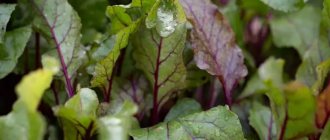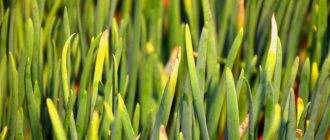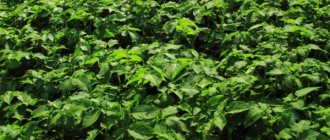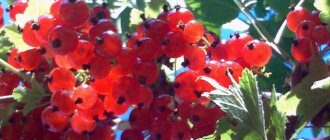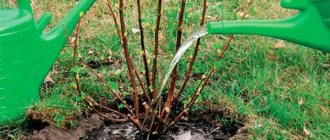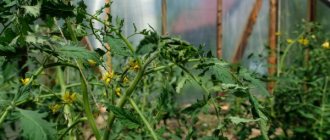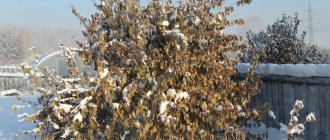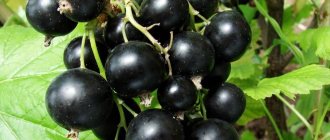Few vegetable growers know why they should sound the alarm if potato tops turn yellow, dry out and wither. Potatoes (here are the best varieties) seem to be an unpretentious plant, as if they were planted and forgotten - this is a mistaken opinion. Yellowed foliage (and not only on it, but also on onions and garlic) signals the presence of a disease or invasion of parasites, which is why subsequent drying, wilting of the tops and death of the potato crop occur. The reasons for modification of the leaves of this crop can also be unfavorable weather conditions, lack of nutrition, and the ripening period.
There are many factors causing yellowing, drying and wilting of the tops of our vegetables. Land owners often face the problem of changing the color of potato foliage. It is necessary to understand the causes of this disease, to understand why this happens, in order to provide the necessary assistance in a timely manner and grow a healthy harvest.
Fungal and bacterial diseases of potatoes
One of the reasons for the wilting of potato tops is all kinds of fungal diseases. Experienced gardeners know why these epidemics pose a great danger to the crop and are difficult to treat. It is necessary to begin the fight against such a scourge immediately after detection. Here are the most common fungal diseases.
Late blight
The fungal spores are located on the inside of the leaves. Gradually, the tops become covered with brown stripes, wither and dry out. Vegetable tubers become covered with dark spots and rot. The amount of harvest is halved.
What to do
Control methods: use of varieties resistant to late blight; preventive treatment with fungicides during the flowering period; carrying out deep hilling; destruction of infected tops a week before harvest; sorting of collected tubers.
Fusarium
At the initial stage of the disease, the lower leaves of the plant wilt, gradually rising to the tops, and only then they begin to turn yellow, wither, and dry out. Fusarium can be difficult to diagnose, especially in hot, dry climates. There is also verticillium wilt, in which the lower part of the bush turns yellow, withers, and curls. The disease can be detected immediately after germination, which indicates infected planting material.
What to do
Control methods: pre-planting treatment of vegetable seeds; harvesting and burning stems before harvesting potatoes; tillage of the soil mechanically after harvesting.
Dry spotting (macrosporiasis)
The leaves and stems are covered with rounded, elongated spots that gradually grow. The bush dries out and dies. The tubers become small and their number decreases.
What to do
The methods of control are the same as for late blight.
Ring rot
Humid air and elevated temperatures contribute to the occurrence of this disease. The first signs of ring rot appear during the flowering period. Individual stems begin to turn yellow, the top curls, the bush dries, withers and falls apart. In the cross section of the tuber, you can see rot located in the shape of a ring. Most of the potato crop rots in the soil.
What to do
Methods of control: planting healthy seeds in the ground; destruction of diseased bushes; treating the infected area with copper sulfate (50 grams per 10 liters), with a consumption of 1 liter per 6 “squares” of planting area, will help the plants.
Blackleg
A bacterial disease of vegetables that appears immediately after germination. The young shoots curl, turn yellow, and wither. The base of the stems and roots are affected by rot.
What to do
Control methods: preliminary sorting; treatment of seed tubers with fungicides; drying the crop before storing it in the basement (cellar); destruction of diseased plants; Sprinkling the infected area with copper sulfate (2 tablespoons) mixed with ash (1 kg).
Temperature violation
Drought is the enemy of potato plantings. Potatoes prefer temperatures up to + 30 C and high humidity levels. The longer the dry weather lasts, the faster the tops dry from below. If a gardener ignores the problem for a long time, then after a few weeks the yellowness will cover the entire bush. A common misconception is that yellowed foliage will not go away with heavy watering or prolonged rain. Intensive application of moisture will lead to the formation of a crust on the soil surface. It will slow down the rate of moisture penetration to the root system.
Regular watering will help prevent potato leaves from turning yellow. During the growing season, the soil moisture level should not be less than 70%. In arid regions, potato tops require additional irrigation. The second recommendation is periodic loosening of the soil. This is necessary during the formation of tubers. Digging increases the amount of oxygen supplied to the root system.
Potato parasites - nematodes
This is an extremely dangerous type of worm. Why are they so harmful? This type of worm settles in the root system of the plant, the larvae parasitize the leaves, which is why the tops wither and the tubers do not develop. The amount of future harvest from nematodes is significantly reduced. The offspring of this parasite can survive in the soil for ten years.
What to do
Methods of protection: disinfection of work equipment; use of nematode-resistant planting material; changing the place where vegetables grow at intervals of 2 years; growing corn or grain crops in areas damaged by the parasite; The last resort is to involve quarantine service employees.
Plant protection
To protect the first shoots from pests and diseases, you need to take care of their protection in advance. To do this you need:
- Plant varieties with immunity to the most common diseases and dangerous insects.
- 15 days after planting the tubers in the soil, treat the area with garlic solution to preserve the green mass. To prepare it, 350 grams of the vegetable are passed through a meat grinder and poured with a liter of heated water. The resulting solution is infused for at least a day, after which it is filtered with gauze. Before using the liquid, another 10 liters of water are added to it to make the solution less concentrated. You need to spray the bushes with garlic mixture three times a month.
- During flowering of bushes, fungicides can be used for prevention. Ditamine, copper oxychloride and Kuproxate are suitable for this.
Viral diseases of potatoes
Viruses that infect potatoes are incurable, which is why they are considered the most dangerous diseases of this crop. Their varieties are diverse: top curl virus, mosaic alfalfa, curl, mottling, gothic, etc. Signs of this disease are: deformity of tubers, yellowness of foliage, stunted growth, early death of stems, and a sharp decrease in yield. Infection occurs when a healthy tuber comes into contact with diseased plants, through garden equipment, and is transmitted by certain types of insects. Affected bushes must be disposed of along with the tubers.
There are no chemical protective measures in the case of viral epidemics. Only planting healthy seeds will help here.
How to fight
Proper care is the key to a good potato harvest. The growing process is labor-intensive and not suitable for those who like easy prey. Here you need to carefully consider all the factors:
- soil quality;
- properly selected seeds;
- providing the required humidity;
- timely and correct hilling;
- fertilizer;
- pest and disease control.
Beginners should write down when the potatoes were planted and when they need to harvest. It happens that yellowed leaves of a crop are mistaken for a problem, but in fact, the vegetable is simply already ripe.
If the potatoes were planted at the end of April, then harvesting can begin in mid-July. If planting was carried out later, then July is the time for hilling. This is an important process that helps not only regulate soil moisture in potatoes, but also get rid of excess weeds.
Timely and correct hilling can eliminate yellowing of potato tops
For industrial purposes, preference is most often given to hybrids, which have long-term storage and are less susceptible to various diseases.
If potatoes are grown for personal purposes, then it is better to choose ordinary varieties of vegetables. They are great for beginning farmers, as the ripening time is usually about the same.
Yellowing of potato tops must be dealt with in a timely manner to avoid severe damage and poor crop yield. Its taste also depends on how healthy the potato is.
Various harmful insects
Insect pests cause annual damage to garden owners. The most common of them are: wireworm, potato flea beetle, 28-spot ladybug, leafhoppers, etc.
Including the Colorado potato beetle
The most dangerous potato pest is the Colorado potato beetle (its Far Eastern analogue is the 28-spotted ladybug). The insect is yellow-orange in color, the back is lined with black stripes in the amount of 10 pieces. This beetle is capable of flying over long distances thanks to its well-developed wings. Female insects lay their offspring on the inside of potato leaves. Young leaf beetles actively feed on the green part of the plant, which is why the vegetable bushes begin to turn yellow, dry out, and wither. The eggs are yellow in color and oblong in shape. The larvae range from dark brown to orange and pink tones with dark specks on the sides. Larvae and beetles are capable of destroying all tops in a short time.
What to do
Methods of protection: collection and destruction of larvae and beetles by hand; planting crops next to potatoes - calendula, beans, beans; destruction of insects by bacterial infection (bitoxibacillin, boverin); use of toxic drugs for special purposes.
Advice from an experienced summer resident
Not everyone knows what to do if the potatoes turn yellow and dry out. To get a high-quality harvest, you need to familiarize yourself with the basic tips for growing this vegetable:
- Plant marigolds, peas, oats, beets and cabbage near potato bushes to repel pests from potatoes.
- Before planting, fertilizers with urea are added to the soil. No more than 700–800 grams of fertilizer are consumed per hundred square meters of land.
- During planting, the holes should be treated. They add bird droppings with overripe manure mixed with soil.
- After planting, the area must be treated with liquid chicken droppings. At least ten liters of solution are consumed per square meter.
Non-parasitic diseases of potatoes
Diseases have been ruled out, parasites have been removed, but the vegetable bushes continue to turn yellow, dry out, wither - why is this happening? Here the reasons lie hidden in unfavorable growing conditions associated with soil composition, temperature, and humidity. Particular attention must be paid to the nutrition of potato crops. Lack of nutrients can lead to disease and crop loss.
Lack of iron and magnesium
A lack of the first element can turn the upper leaves of the potato yellow. Magnesium starvation turns the lower leaves of the plant yellow.
Bronzing of leaves
Occurs when there is a lack of potassium. The lower stems become bronze in color, curl, and dry out. Plants planted in peaty soils are most susceptible to this disease.
Nitrogen deficiency
A lack of this element can stop the growth of stems and leaves in vegetables. The tops turn light green and gradually turn yellow. The disease is common on sandy loam areas.
Phosphorus deficiency
A hot and dry climate can lead to phosphorus deficiency. Such starvation makes plants stunted, weak, and pressed to the ground. Productivity drops sharply. In the section of the tuber you can see a purple color.
If signs of a lack of nutrients appear, you should feed the potatoes with special fertilizers.
Undoubtedly, you need to know the enemy by sight, and even more so an enemy capable of destroying a summer cottage harvest. Having understood what ailment caused the potato tops to turn yellow, dry out and wither, you can carry out rescue measures in time, protect the vegetable plantings, and reap a rich and healthy harvest.
Pests
With severe pest damage, potato shoots may also turn yellow. Most often, yellowing is associated with the active activity of the following insects:
- The Colorado potato beetle and its larvae actively eat potato tops, leaving no healthy space on them. After such a “treatment,” the crippled plants begin to ache and the leaves begin to turn yellow. The drugs “Bankol”, “Zhukoed”, “Commander”, “Iskra” are effective against the pest. You can use infusions based on garlic, celandine and dandelions for spraying.
- The nematode consumes the sap of the potato root system, thereby severely inhibiting the plant. As a result, the leaves do not receive enough nutrients and begin to gradually die. In some cases, crop losses from this parasite can reach 80%! To repel nematodes in potato rows, you should plant marigolds, lupins, peas, fescue, oats or rye.
- The wireworm, or rather its larvae, literally bite into potato tubers and stems. The attacked plants immediately begin to lag behind in development, some of their leaves turn yellow due to lack of nutrition. In the damage left by the larvae, fungi and bacteria quickly begin to develop, leading to the rapid development of rot. To combat insects, use the drugs “Bazudin”, “Diazinon”, “Prestige”, “Provotox”.
If you find a significant number of yellowed leaves, first of all, pay attention to the following points:
- How much (and how often) fertilizer did you apply?
- What is the frequency and volume of watering?
- What is the weather like?
If everything is fine with this, take a closer look to see if there are any signs of disease or pest on the diseased leaves. If concerns are confirmed, take appropriate steps to treat or remove plants.
If you detect even slight yellowing on potato bushes, carefully observe whether the yellowness is spreading to other parts of the plant or neighboring bushes.
© Ilya Vladimirovich | 2017-06-29 That same gardener

